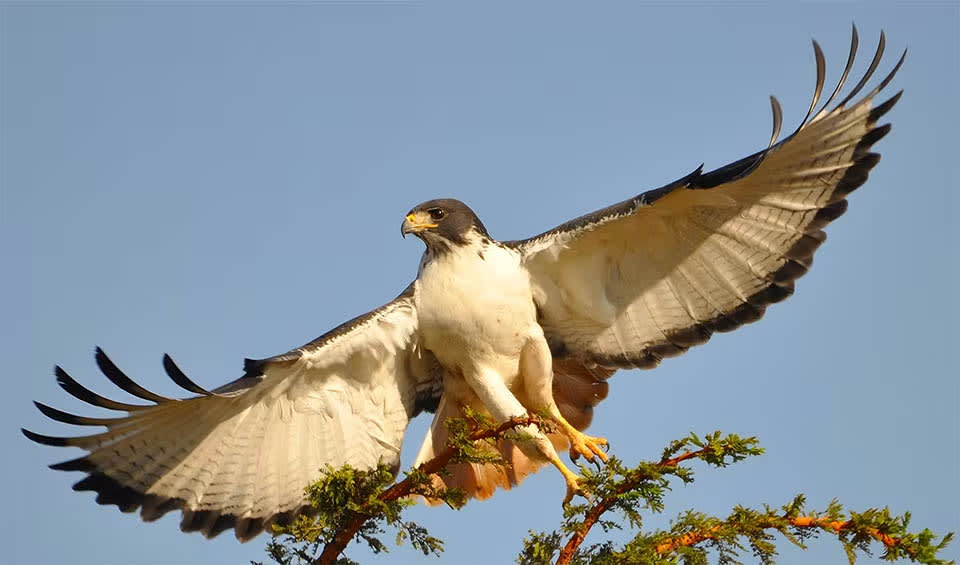A fascinating bird of prey with a rich diversity of species characterized by their extensive wingspans. These majestic birds are commonly referred to by various names, including raptors, buzzards, and hawks, all of which rightfully recognize their status as formidable hunters and aerial predators.
One notable feature of the Augur Buzzard genus is the unique flight style exhibited by each species, which is tailored to their specific physiology and lifestyle. From soaring gracefully on thermal updrafts to executing swift and agile maneuvers during hunting pursuits, each species has evolved distinct aerial abilities suited to its ecological niche.
Augur Buzzards are renowned for their strong pair bonds and lifelong loyalty to their mates. Breeding pairs often exhibit remarkable fidelity, with individuals remaining together for many years, if not for life. During the breeding season, the responsibilities of nest-building, incubation, and chick-rearing are shared between both parents, with the male typically tasked with hunting and providing food while the female attends to the needs of the nest and offspring.
Within the nest, competition for resources and survival begins early, with siblings vying for dominance and access to food. In many species, the eldest and strongest offspring often have the greatest chance of survival, as they are better equipped to compete for parental care and resources.
Despite their impressive adaptations and survival strategies, Augur Buzzards are not without vulnerabilities. Like many birds of prey, they are susceptible to environmental threats, including exposure to pollutants such as carbon monoxide. Tragically, incidents involving the inadvertent exposure of Harris Hawks (Buteo unicinctus), a species closely related to the Augur Buzzard, to carbon monoxide in enclosed transport vehicles have resulted in significant mortality events, underscoring the importance of environmental stewardship and conservation efforts to mitigate such risks.
Distribution
 Angola
Angola Burundi
Burundi Cameroon
Cameroon DR Congo (Kinshasa)
DR Congo (Kinshasa) Eritrea
Eritrea Ethiopia
Ethiopia Kenya
Kenya Malawi
Malawi Mozambique
Mozambique Namibia
Namibia Rwanda
Rwanda Somalia
Somalia South Africa
South Africa South Sudan
South Sudan Sudan
Sudan Tanzania
Tanzania Uganda
Uganda Zambia
Zambia Zimbabwe
ZimbabweAnything we've missed?
Help us improve this page by suggesting edits. Glory never dies!
Suggest an editGet to know me
Terrestrial / Aquatic
Altricial / Precocial
Polygamous / Monogamous
Dimorphic (size) / Monomorphic
Active: Diurnal / Nocturnal
Social behavior: Solitary / Pack / Herd
Diet: Carnivore / Herbivore / Omnivore / Piscivorous / Insectivore
Migratory: Yes / No
Domesticated: Yes / No
Dangerous: Yes / No





